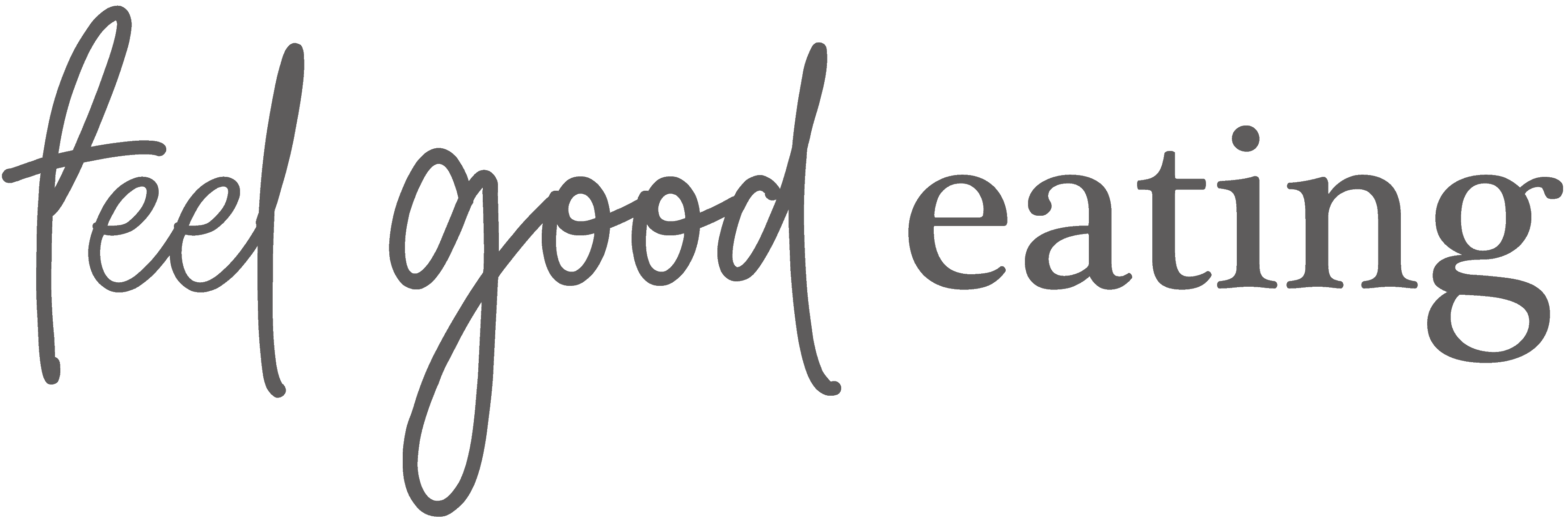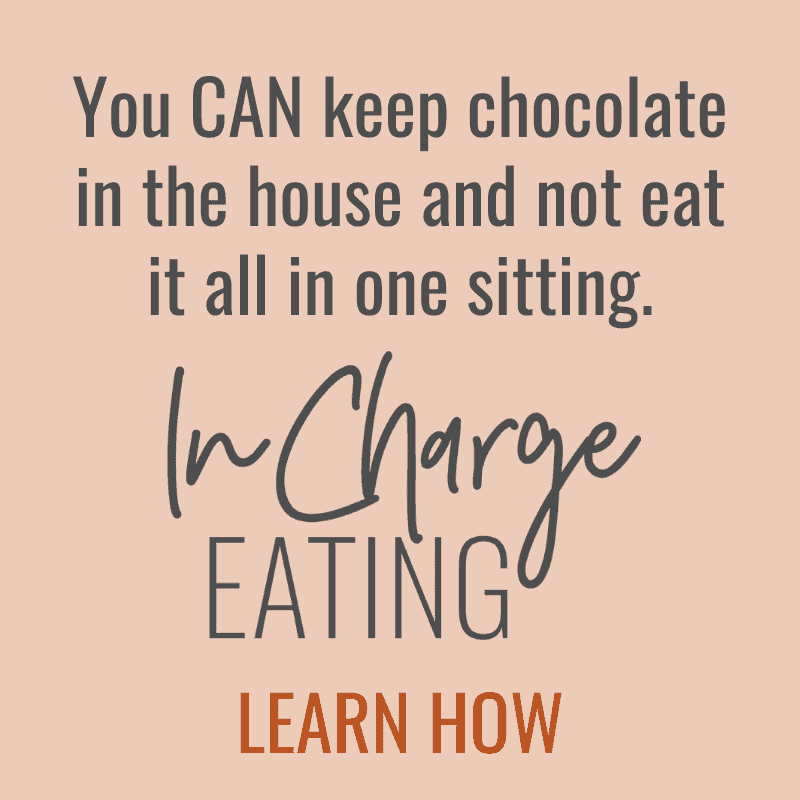What is considered a binge? There are ways we can get a bit of clarity on this but at the same time it can be tricky to provide a concrete definition because we can be very quick to label any type of eating that we perceive to be excessive as a “binge”. Even terms like “overeating” and “emotional eating” can be wrapped up under the umbrella of binge eating these days.
The word “binge” also gets used really flippantly and has become part of our everyday language. For example, when we say things like; “I just binged the entire season of XYZ last night”
In this article, we will look at what overeating is, what binge eating is, what binge eating disorder is, and what emotional eating is and what to do next if you are concerned about your eating.
What is considered overeating?
I don’t really like the term ‘overeating’ (you can read why here). I much prefer: eating past the point of comfortable fullness.
It’s the type of eating that tips you over from fullness feeling comfortable and neutral, into fullness that feels uncomfortable and tends to be associated with unpleasant physical sensations in your body.
So, it could be one bite that does that.
Or, it could be going back for seconds that is the tipping point.
Or it could be the uncomfortable fullness that is really common to experience at things like Christmas or birthdays.
You may feel some level of regret after eating past the point of comfortable fullness, but you don’t have to. And this is typically because in the moment you are feeling physically uncomfortable and you want that feeling to go away. Totally makes sense! But that regret or the, “Ugh I wish I didn’t do that”, isn’t something that you get hooked with into a guilt and shame spiral.
The other characteristic that sets overeating apart from binge eating and binge eating disorder is that this type of eating doesn’t happen in secret.
What is considered a binge?
A really simple definition of a binge (as opposed to binge eating disorder) is: eating large amounts of food in a short period of time in a way that feels out of control.
What is binge eating disorder then?
Binge eating disorder is the name given to a clinical eating disorder that involves binge eating. Let’s take a look at the formal diagnostic criteria that appear in the Diagnostic and Statistical Manual of Mental Disorders 5 (DSM-5). If you do not want to read about specific eating disorder behaviours you may like to skip over the binge eating disorder diagnostic criteria section.
Binge eating disorder diagnostic criteria
According to the DSM-5, there are five diagnostic criteria for binge eating disorder:
1. Recurrent episodes of binge eating. An episode of binge eating is characterised by both of the following:
a) Eating in a discrete period of time (e.g. within any two hour period), an amount of food that is definitely larger than what most individuals would eat in a similar period of time under similar circumstances;
b) A sense of lack of control over eating during the episodes (e.g. a feeling that one cannot stop eating or control what or how much one is eating).
So, these two characteristics (1a and 1b) are what the DSM-5 considers binge eating. If the criteria below are also met, then the binge eating is considered to be binge eating disorder, a serious mental health condition.
2. Binge eating episodes are associated with three or more of the following:
a) Eating much more rapidly than normal.
b) Eating until feeling uncomfortably full.
c) Eating large amounts of food when not feeling physically hungry.
d) Eating alone because of feeling embarrassed by how much one is eating.
e) Feeling disgusted with oneself, depressed, or very guilty after overeating.
3. Marked distress regarding binge eating is present.
4. The binge eating occurs, on average, at least once a week for 3 months.
5. The binge eating is not associated with the recurrent use of inappropriate compensatory behaviour and does not occur exclusively during the course of bulimia nervosa or anorexia nervosa
How much food is considered a binge?
The DSM-5 provides a very vague idea of how much food is considered a binge where it says “an amount of food that is definitely larger than what most individuals would eat in a similar period of time”. If you do some Googling you will find articles giving you calorie amounts (so maybe skip that!) but this is also not super helpful because in reality, if you experience feeling out of control, if you are eating in secret and feeling an incredible amount of distress, then whatever the amount of food is, is irrelevant.
This is where the terms, ‘subjective binge’ and ‘objective binge’ might be used.
An ‘objective binge’ involves amounts of food that the majority of people would consider to be substantially more than what would be usual to eat. For example block/s of chocolate, bag/s of potato chips, loaf/ves of bread, packet/s of cookies, multiple UberEats orders (and for some people, a binge involves eating combinations of these).
A ‘subjective binge’ means that the majority of people would consider the amount of food eaten to be reasonable, but for whatever reason, the person who ate it felt out of control, distressed, ashamed and ate in secret. An example of a subjective binge might be eating three cookies.
Here’s where things get even murkier: we also have the influence of diet culture and our diet mentality on what we perceive or believe to be a “reasonable” or “usual amount to eat”. For example, the common ‘rule’ about the ‘correct’ amount of chocolate to eat is either a fun-size piece or two-squares from a block. So, if you eat a row of chocolate, or two rows, or a full-size bar, you can see how you might start to think that you binge on chocolate. (FYI: These amounts of chocolate are 100% food rules rooted in weight bias and you are welcome to let go of them if you feel they aren’t serving you. It is very reasonable to eat a whole chocolate bar or a couple of rows of chocolate.)
What is emotional eating?
Emotional eating is the term applied to the type of eating we engage in when we use food to soothe, comfort, numb, distract from a difficult emotion. This is another simplified explanation for what is usually a complex human experience. I tease apart physical hunger and emotional hunger a bit more in this article.
Does the label matter?
Understanding the difference between overeating, binge eating and emotional eating can be useful. And the diagnostic criteria for binge eating disorder is useful when conducting research or to help people access treatment or funding for treatment. But on a day to day basis, getting bogged down in the criteria is not super helpful when considering people’s individual experiences.
Because the diagnostic criteria for binge eating disorder also have their limitations (failing to acknowledge the role of restriction and that concern about weight and shape is often also a part of binge eating disorder are just two of them).
What might be more helpful is knowing that whatever it is that you want to call it, if at the heart of it you are experiencing distress with your eating, you deserve to get support. You don’t have to have a clinical eating disorder; in fact, seeking support early is really important to prevent things from snowballing into a clinical eating disorder.
Not sure if there’s something more going on?
If you have got all the way to here (thank you – this has been a lengthy tome!) and are feeling concerned about your eating and your eating behaviours, you might like to complete the Eating Disorder Examination Questionnaire (EDE-Q). NOTE: this will not diagnose you with an eating disorder, it is a screening questionnaire that will help you identify if further investigation and discussion with your doctor are needed.
An electronic version of the EDE-Q can be found here
Some tips for completing:
- At the start, you will be asked to create a profile. You do not have to do this to take the questionnaire. Just skip this screen
- At the very end, you will be asked to enter your weight, height and gender assigned at birth. You can enter zero (0) for your weight and height. Unfortunately, there isn’t a way to override the gender question.
Upon completion, you will be advised of your results and suggestions for next steps. You can also print your results to give your doctor if necessary.
Eating Disorder Treatment Providers in Australia
To find an eating disorder treatment provider in Australia, here are some places to start:
- Ask for recommendations from your doctor or other trusted health care provider
- Australian & New Zealand Academy of Eating Disorders Directory
- Inside Out Institute
- HAES Australia
Eating Disorder Treatment Providers outside of Australia
To find an eating disorder treatment provider elsewhere in the world you can start with the Association for Size Diversity and Health and Find a HAES Expert directories but please note that the providers here may not specialise in eating disorders.
These are places to start only. I cannot vouch for, nor endorse any of the providers on these directories.
This article has been a peek into some of the content adapted from In Charge Eating. If you found this article helpful, I would love for you to check it out! In Charge Eating is my online program for people who experience overeating, emotional eating or binge eating go from feeling out of control around food to feeling calm and in charge.



 Hi! My name is Nina.
I’m a Certified Intuitive Eating Counsellor taking the ‘diet’ out of Dietitian. I am here to help you reject diet culture, tune into your body’s own inner wisdom about how to truly nourish yourself and ultimately feel good eating™
Hi! My name is Nina.
I’m a Certified Intuitive Eating Counsellor taking the ‘diet’ out of Dietitian. I am here to help you reject diet culture, tune into your body’s own inner wisdom about how to truly nourish yourself and ultimately feel good eating™ 
